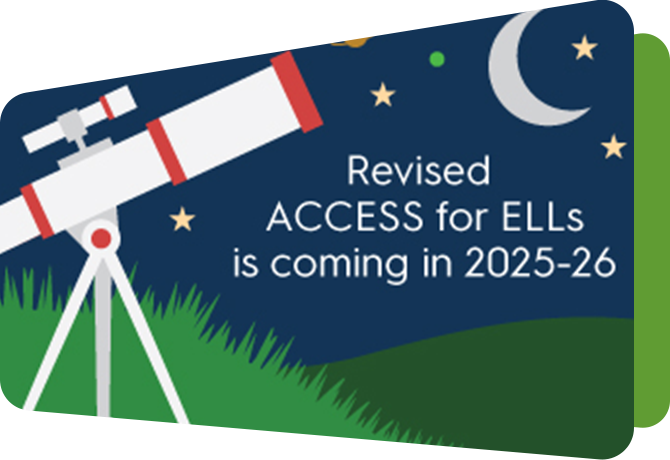How to use WIDA MODEL and the concordance table for instructional planning

By Hannah Haynes
WIDA’s suite of assessments provides a comprehensive system to measure and monitor English language proficiency of multilingual learners. Among these tools is WIDA MODEL, a flexible interim assessment that gives educators like you valuable insights between annual summative testing. It can be used up to twice per year. You can also use MODEL scores to inform instruction and help you plan. Let’s dig in.
How MODEL and WIDA ACCESS Work Together
Both MODEL and WIDA ACCESS are built on a strong foundation of research and are grounded in the WIDA English Language Development Standards Framework. They both assess the four key language domains: Listening, Speaking, Reading and Writing.
A benefit of MODEL is its similarity with ACCESS. WIDA research shows that how a student performs on MODEL can give educators a good idea of how that same student is likely to perform on ACCESS. A student’s overall composite score on MODEL helps predict their overall composite proficiency level (PL) score on ACCESS. Both assessments report the same types of scores, allowing you to
- Track progress over time
- Use data to inform instructional planning
- Predict student performance on ACCESS using the concordance table
Simply put, students who take MODEL are well-positioned to demonstrate their abilities on ACCESS.
What Is the Concordance Table?
The concordance table is a research-based tool that shows the relationship between scores on MODEL and ACCESS. It allows you to use a student’s Overall Composite Score on MODEL to estimate the score they would be likely to receive on ACCESS.
View the WIDA Concordance Table here.
This is particularly helpful because you can receive scores from MODEL quickly, whereas there’s a longer wait for scores from ACCESS. If your student takes MODEL, after you receive the student’s scores, you can use the concordance table to understand how that student might perform on ACCESS. This can help guide decisions about grouping, scaffolding and instructional support.
The concordance table is valid for predicting scores during the 2025-2026 testing window.
Following the 2025-2026 testing window, WIDA plans to conduct a study to determine the predictive relationship between MODEL Online and Revised ACCESS, which may result in updates to the current table.
How to Use the Concordance Table
Here are some practical examples of how to use the table.
A student in fourth grade takes MODEL and receives an overall composite scale score of 255. If this student took ACCESS on the same day, we'd expect the overall composite proficiency level score to be between 1.9 and 2.3.
If another fourth-grade student takes MODEL and receives an overall composite scale score of 292, we’d expect this student’s overall composite proficiency level score to be between 2.8 and 3.1
Support Instructional Planning
Beyond helping to predict ACCESS scores, MODEL data is intended to inform instruction directly. Find additional guidance on this in the Focus Bulletin: Using WIDA MODEL to Support Instructional Planning for Multilingual Learners.
This resource can help you interpret results and translate them into classroom strategies that support language development across all subject areas.





